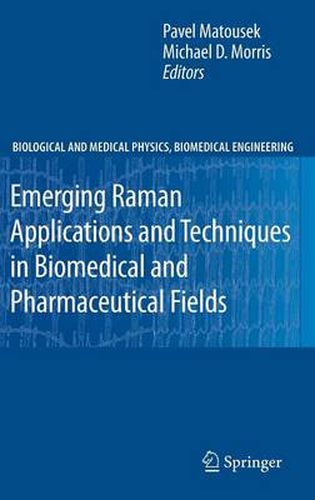Readings Newsletter
Become a Readings Member to make your shopping experience even easier.
Sign in or sign up for free!
You’re not far away from qualifying for FREE standard shipping within Australia
You’ve qualified for FREE standard shipping within Australia
The cart is loading…






This title is printed to order. This book may have been self-published. If so, we cannot guarantee the quality of the content. In the main most books will have gone through the editing process however some may not. We therefore suggest that you be aware of this before ordering this book. If in doubt check either the author or publisher’s details as we are unable to accept any returns unless they are faulty. Please contact us if you have any questions.
In recent years, Raman spectroscopy has undergone a major transformation from a specialist laboratory technique to a practical analytical tool. This change was driven on several parallel fronts by dramatic advances in laser instrumentation, detectors, spectrometers, and optical ?lter technology. This resulted in the advent of a new generation of compact and robust Raman instruments with improved sensitivity and ?exibility. These devices could be operated for the ?rst time by non-specialists outside the laboratory envir- ment. Indeed, Raman spectroscopy is now found in the chemical and phar- ceutical industries for process control and has very recently been introduced into hospitals. Handheld instruments are used in forensic and other security applications and battery-operated versions for ?eld use are found in envir- mental and geological studies. Simultaneously, major advances have been seen in the development of powerful processing methods, some driven by the progress of related spect- scopic methods such as NIR absorption spectroscopy. Numerous chemometric packages are available for advanced analysis of data. These do not require specialist user knowledge (although caution is required in interpreting - sults) and provide further enhanced sensitivity and capability to the Raman technique. In this book we focus on two such major ?elds, biomedical and ph- maceutical. The book is aimed at life sciences and pharmaceutical re- erships. Accordingly, the chapter authors emphasize explanatory material with practical implications rather than focusing on mathematical detail.
$9.00 standard shipping within Australia
FREE standard shipping within Australia for orders over $100.00
Express & International shipping calculated at checkout
This title is printed to order. This book may have been self-published. If so, we cannot guarantee the quality of the content. In the main most books will have gone through the editing process however some may not. We therefore suggest that you be aware of this before ordering this book. If in doubt check either the author or publisher’s details as we are unable to accept any returns unless they are faulty. Please contact us if you have any questions.
In recent years, Raman spectroscopy has undergone a major transformation from a specialist laboratory technique to a practical analytical tool. This change was driven on several parallel fronts by dramatic advances in laser instrumentation, detectors, spectrometers, and optical ?lter technology. This resulted in the advent of a new generation of compact and robust Raman instruments with improved sensitivity and ?exibility. These devices could be operated for the ?rst time by non-specialists outside the laboratory envir- ment. Indeed, Raman spectroscopy is now found in the chemical and phar- ceutical industries for process control and has very recently been introduced into hospitals. Handheld instruments are used in forensic and other security applications and battery-operated versions for ?eld use are found in envir- mental and geological studies. Simultaneously, major advances have been seen in the development of powerful processing methods, some driven by the progress of related spect- scopic methods such as NIR absorption spectroscopy. Numerous chemometric packages are available for advanced analysis of data. These do not require specialist user knowledge (although caution is required in interpreting - sults) and provide further enhanced sensitivity and capability to the Raman technique. In this book we focus on two such major ?elds, biomedical and ph- maceutical. The book is aimed at life sciences and pharmaceutical re- erships. Accordingly, the chapter authors emphasize explanatory material with practical implications rather than focusing on mathematical detail.